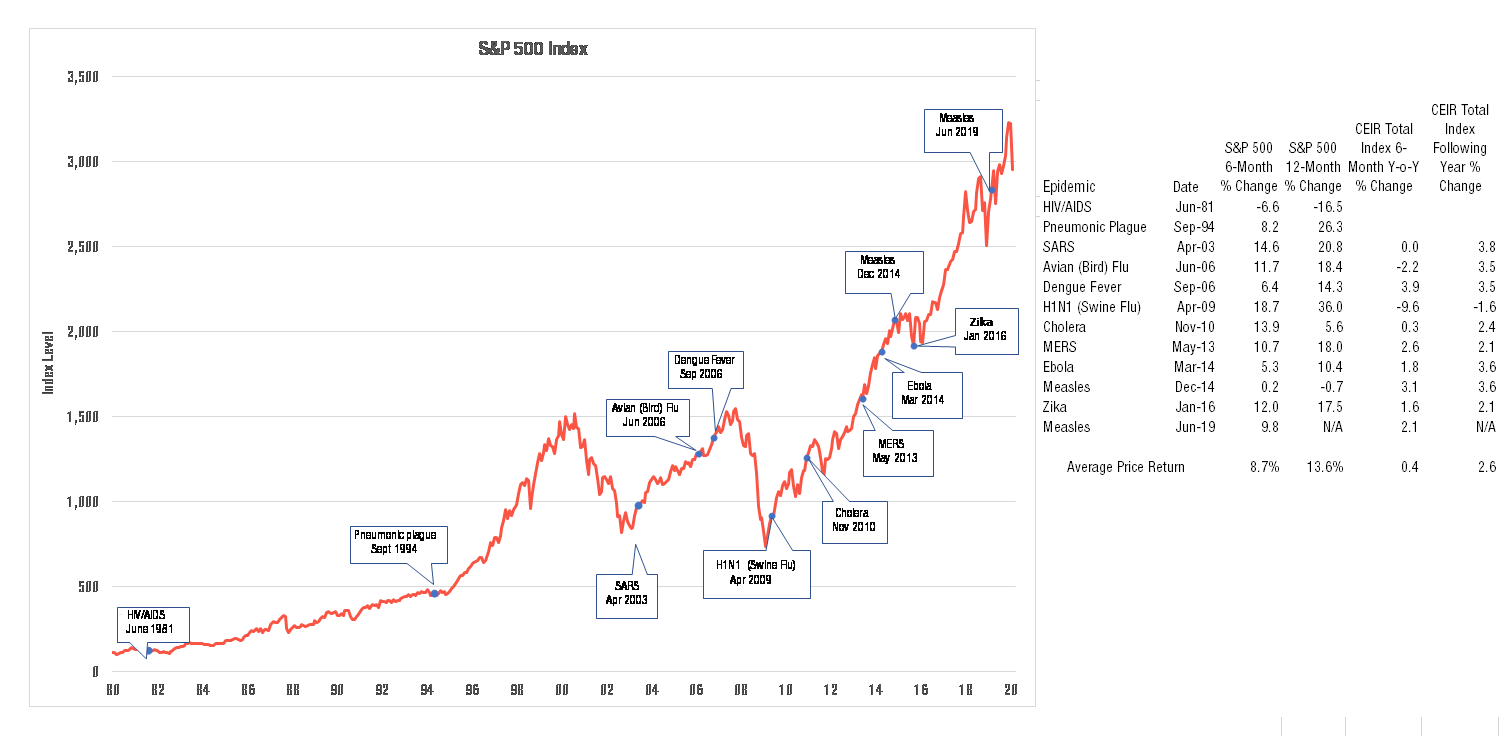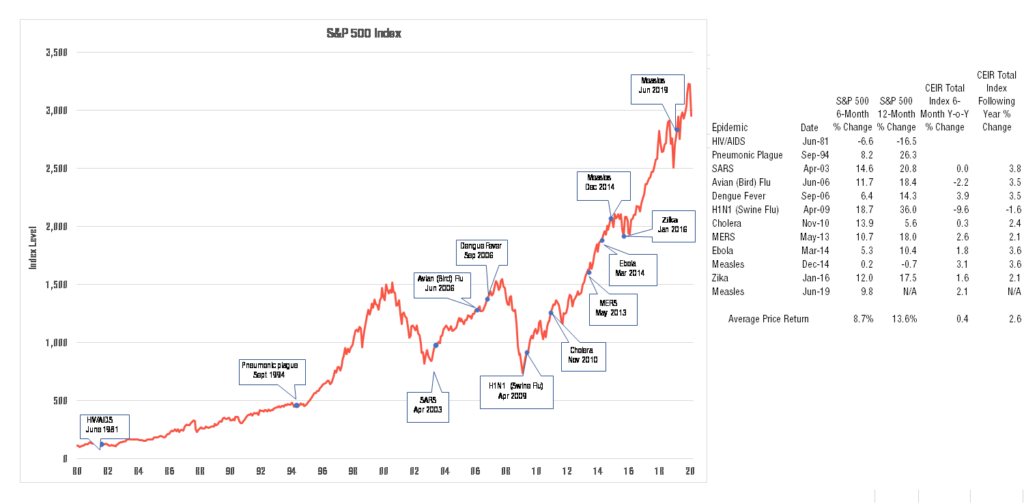By Allen Shaw, Ph.D.
Chief Economist for Global Economic Consulting Associates, Inc. and CEIR Economist
The Center for Exhibition Industry Research (CEIR) has been tracking and analyzing data since the exhibition industry began feeling the impact of COVID-19 in January. The data is as fluid as the situation’s progress. However, CEIR is able to provide answers to some of the questions that have been streaming into our offices, especially in terms of how we foresee the effect of COVID-19 impacting the U.S. business-to-business (B2B) exhibition industry in the coming months.
There are about 9,400 B2B exhibitions taking place in the U.S. annually. In 2019, the trade show industry’s total impact on the U.S. GDP was approximately $101 billion. As of 15 March 2020, 50 B2B events have announced their cancellations. Notable events that have canceled include:
- Inspired Home Show by the International Housewares Association (over 800,000 net square feet [NSF]);
- HIMSS (Healthcare Information and Management Systems Society) Global Health Conference and Exhibition (over 600,000 NSF);
- ASD (Affordable Shopping Destination) Market Week (about 600,000 NSF); and
- Natural Products Expo West (nearly 600,000 NSF).
These 50 events amounted to a total loss of 5.2 million NSF and $318 million in show organizer revenue. Taking into account direct spending of exhibitors and attendees, the loss to the economy stands at $1.8 billion.
New cancellation announcements are appearing daily, which is likely to increase with the recommendation made on 15 March 2020 by the U.S. Centers for Disease Control (CDC) to cancel events that will attract 50 or more people for the next eight weeks. We should also note that simply counting the announced cancellations published in media reports significantly underestimates the actual number of cancellations, since the cancellation of many small- to medium-sized events does not typically attract media attention. This is especially true for events held in hotels.
There are about 2,500 B2B events held between 1 March and 15 May each year. We believe that about 50% to 80% of those events have already canceled or will likely cancel in the coming weeks. Our estimates show that this would result in a loss of 41 to 65 million NSF and $2.3 billion to $3.6 billion in show organizer revenue. Combined with direct spending by exhibitors and attendees, the total loss to the economy would be $14 billion to $22 billion.
The Trump Administration is discussing with Congress legislation to provide financial relief to the airline, hotel and cruise line industries. CEIR advocates that the financial assistance should extend to the exhibition industry as well. Our baseline scenario calls for a brief epidemic with confirmed COVID-19 cases peaking in late April and tapering off in May or June at the latest. Under this scenario, the U.S. will enter a technical recession during the first half of the year.
Prior to the COVID-19 crisis, the economy was in “a good place” as Federal Reserve Chairman Powell described with a strong banking sector, record low consumer debt service to income ratio, robust job gains and a 50-year low unemployment rate (3.5%). With the fiscal stimulus package recently passed by the House of Representatives, additional stimulus in the works and Federal Reserve’s monetary easing (cutting interest rates to 0 plus quantitative easing [QE]), we expect a quick recovery for GDP during the third quarter of 2020. We expect B2B exhibitions to resume in 2020Q3 as well.
It is difficult, if not impossible, to predict when the stock market will start to rebound. While past performance is no guarantee of future results, historical experience might offer some clue as what to expect in the future. Since 1980, a six-month change of the S&P 500 Index following the start of an epidemic was positive in 11 of the 12 cases with an average return of 8.8%. The decline that occurred in the HIV/AIDS epidemic of June 1981 coincided with the recession caused by the Federal Reserve‘s contractionary monetary policy, which sought to rein in the high inflation of that time. One could argue that the decline in the stock market was mainly attributable to monetary policy tightening, rather than the HIV/AIDS epidemic.
According to the CEIR Total Index, a measure of the exhibition industry performance, we can see the change in the two first quarters following the starting quarter of an epidemic was positive for all but 2 of the 10 cases with an average gain of 0.4%. And, when looking at the year following the start of an epidemic, the CEIR Total Index reports positive growth for all but one epidemic. The decline in that case was mainly caused by the Great Recession rather than by the Swine Flu during 2008-2009.

At this point, the decline in the exhibition industry is a one-off retraction of the industry’s size. Since this is a transitory event, we expect a full recovery for the U.S. B2B exhibition industry in 2021. CEIR will continue to release information as it becomes available.
